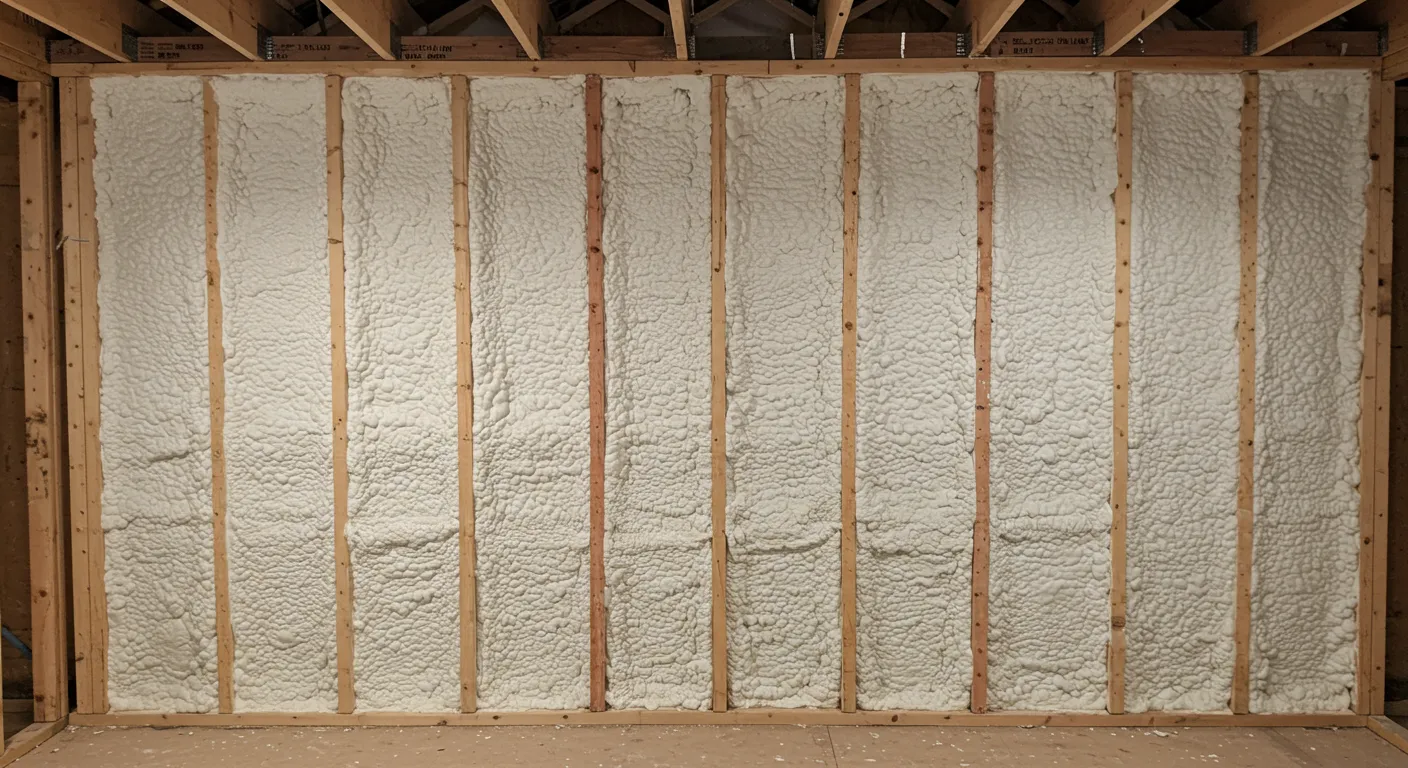
Spray foam insulation blocks moisture intrusion and controls indoor humidity, both of which are major contributors to mold growth. By sealing gaps, cracks, and joints, spray foam creates an airtight barrier that keeps moisture-laden air from entering wall cavities and attics. Unlike traditional materials, it does not absorb water, which eliminates the risk of becoming a food source for mold colonies.
Closed cell spray foam, in particular, offers a vapor barrier that inhibits condensation. When properly installed, it isolates indoor environments from exterior humidity swings, maintaining stable conditions that reduce the risk of microbial growth. This content breaks down how different foam types work, where to use them, and what to consider before making a decision.
Ozark Eco Foam applies hands-on expertise gained through years of installing insulation in residential, commercial, and agricultural buildings across varied climate zones in Kansas and surrounding regions. The following information reflects field-tested outcomes from real-world installations.
Mold develops where moisture persists. Typical triggers include:
Mold spores require only moisture and organic material to thrive. Preventing moisture intrusion is the first line of defense.
Spray foam insulation prevents air exchange, reducing the pathways through which moisture enters a structure. It insulates and seals simultaneously.
| Feature | Spray Foam (Closed Cell) | Spray Foam (Open Cell) | Fiberglass or Cellulose |
|---|---|---|---|
| Air Barrier | Yes | Yes | No |
| Vapor Retarder | Yes | No | No |
| Moisture Resistance | High | Moderate | Low |
| Mold Growth Support | No | No | Yes (if wet) |
| Structural Reinforcement | Yes | No | No |
Bonus Tip: In regions with fluctuating humidity like Southeast Kansas, closed cell foam performs better in basements and crawl spaces due to its vapor resistance.
These are common mold hotspots. Spray foam insulation blocks ground moisture, seals rim joists, and insulates subfloors in a single application.
Properly applied foam creates a conditioned attic space, eliminating temperature and moisture differences that drive condensation.
Air sealing at the framing stage prevents future mold issues from internal humidity and external weather conditions.
| Property | Closed Cell Spray Foam | Open Cell Spray Foam |
|---|---|---|
| R-Value per Inch | 6.5–7.0 | 3.5–4.0 |
| Water Absorption | <1% | 5%–10% |
| Air Impermeability | Excellent | Excellent |
| Vapor Permeability | 0.8 perms (2″) | >10 perms |
| Structural Rigidity | High | Low |
Source: U.S. Department of Energy, Building America Program

In humid zones with high rainfall or ground saturation, like Kansas, moisture control is critical. Freeze-thaw cycles during winter can lead to condensation inside walls or under roofs. Closed cell foam is the preferred option for these zones due to its low vapor permeability and structural rigidity.
Bonus Tip: For metal buildings, apply closed cell spray foam directly to interior sheathing to prevent condensation from temperature differentials.
No. Existing mold must be removed prior to application. Encapsulating mold traps spores and allows growth to continue unseen.
Not recommended. Closed cell is better for resisting ground moisture and condensation.
No. It does not provide a food source or nesting material for pests.
Yes. Properly installed foam seals cracks, reducing humid air intrusion.
Ozark Eco Foam applies experience-backed techniques to help prevent mold and moisture issues in Kansas homes and facilities. For insulation solutions built around environmental control and building longevity, reach out:
Phone: (417) 572-5893 Email: ozarkecofoam@gmail.com
Over 30 years if undisturbed. Performance remains stable over time.
Closed cell foam resists water and usually stays intact unless physically displaced.
No routine maintenance. Periodic checks during HVAC or roofing work are sufficient.
Yes, but removal requires professional equipment due to its adhesive bond.
Any odors dissipate within 24 hours with proper ventilation during curing.